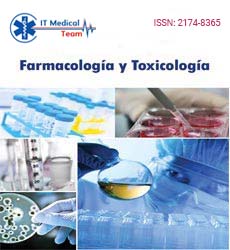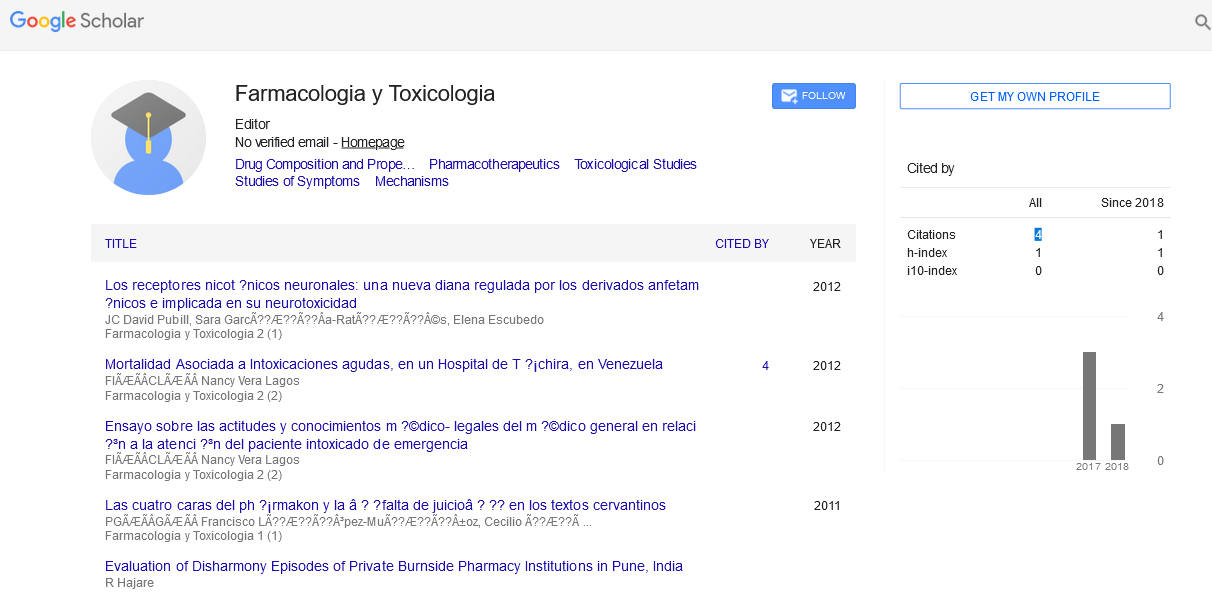Perspective - (2023) Volume 13, Issue 5
The impact of metal toxicology on human health
Raluca Petronela Dumitriu*
Department of Toxicology, University of Lreie, Berlin, Germany
*Correspondence:
Raluca Petronela Dumitriu, Department of Toxicology, University of Lreie, Berlin,
Germany,
Email:
Received: 04-Sep-2023, Manuscript No. ipft-23-14216;
Editor assigned: 07-Sep-2023, Pre QC No. P-14216;
Reviewed: 21-Sep-2023, QC No. Q-14216;
Revised: 03-Oct-2023, Manuscript No. R-14216;
Published:
19-Oct-2023, DOI: -
Introduction
Metallic elements are integral to various aspects of
human life, from infrastructure and technology to health
and nutrition. However, when these metals are present in
excessive amounts or in certain toxic forms, they can have
detrimental effects on human health. Metal toxicology is
the scientific study of the adverse effects of metal exposure
on living organisms, including humans. This article delves
into the impact of metal toxicology on human health,
exploring the sources of metal exposure, mechanisms of
toxicity, common toxic metals and the health
consequences of metal poisoning.
Description
Sources of metal exposure
Metal exposure can occur through various pathways,
both environmental and occupational. Some of the
key sources of metal exposure include:
Air pollution: Airborne metal particles and fumes from
industrial processes, vehicle emissions and natural sources
can lead to inhalation exposure. Common metals
associated with air pollution include Lead (Pb), Cadmium
(Cd) and Mercury (Hg).
Water contamination: Metals can leach into
groundwater and surface water from natural deposits,
mining activities and industrial discharges. Contaminated
drinking water is a significant source of exposure to metals
like Arsenic (As), Lead (Pb) and Copper (Cu).
Occupational exposure: Workers in industries such as
mining, metallurgy, construction and manufacturing may
face direct exposure to toxic metals through inhalation,
dermal contact or ingestion.
Food and diet: Metals can enter the food chain through
soil contamination or as additives in food production.
Common dietary sources of metal exposure include
mercury in fish and lead in some canned goods.
Mechanisms of metal toxicity
Metal toxicity can manifest through various mechanisms,
depending on the metal involved and its chemical
properties. Some of the primary mechanisms of metal
toxicity include:
Oxidative stress: Many metals, such as lead and
mercury, can induce oxidative stress in cells. They
generate Reactive Oxygen Species (ROS) that can damage
cellular components, including proteins, lipids and DNA.
Disruption of enzyme activity: Metals like cadmium can
interfere with the activity of essential enzymes, disrupting
metabolic processes in the body.
Competitive binding: Some metals, like lead and
cadmium, can compete with essential metals like calcium
and zinc for binding sites on proteins, affecting their
functions.
DNA damage: Some metals, including arsenic and
nickel, can directly damage DNA, leading to mutations
and an increased risk of cancer.
Common toxic metals
Various metals have been identified as toxic to humans,
each with its unique set of health effects. Some of the
most common toxic metals include:
Lead (Pb): Lead exposure can result in developmental
delays, cognitive impairments and behavioral problems in
children. In adults, it can cause hypertension, kidney
damage and neurological disorders.
Mercury (Hg): Mercury can cause neurotoxicity,
resulting in symptoms such as tremors, memory loss and
muscle weakness. Consuming mercury-contaminated fish
is a well-known route of exposure.
Cadmium (Cd): Cadmium exposure is associated with
lung and prostate cancer, as well as kidney damage.
Smokers are particularly vulnerable to cadmium exposure
as it accumulates in tobacco.
Arsenic (As): Chronic arsenic exposure is linked to skin
lesions, cardiovascular disease and an increased risk of
certain cancers, including skin, lung and bladder cancers.
Copper (Cu): Excessive copper intake, often due to a
genetic disorder called Wilson's disease, can lead to liver
damage, neurological symptoms and psychiatric disorders.
Chromium (Cr): Hexavalent chromium, a highly toxic
form, can cause lung cancer when inhaled. It is also
associated with skin irritation and gastrointestinal
problems.
Health consequences of metal poisoning
Metal poisoning can have a wide range of health
consequences, both acute and chronic. The effects can
vary based on the type and level of metal exposure. Some
of the most significant health consequences of metal
poisoning include:
Neurological effects: Many toxic metals, such as lead,
mercury and cadmium, have the capacity to damage the
nervous system. This can result in developmental delays
in children and cognitive impairments in adults, including memory problems and mood disorders.
Respiratory issues: Metals like arsenic and hexavalent
chromium can lead to respiratory problems, including
lung cancer and Chronic Obstructive Pulmonary Disease
(COPD).
Cardiovascular disease: Some metals, including lead,
cadmium and arsenic, are associated with an increased risk
of cardiovascular diseases, such as hypertension and
atherosclerosis.
Gastrointestinal disturbances: Metal exposure can cause
gastrointestinal problems, including nausea, vomiting and
diarrhea. Acute exposure to certain toxic metals can lead
to severe gastrointestinal distress.
Cancer: Prolonged exposure to certain toxic metals, such
as arsenic and cadmium, is linked to an elevated risk of
various cancers, including skin, lung, bladder and prostate
cancer.
Renal damage: Cadmium and lead are known to
accumulate in the kidneys, potentially causing kidney
damage and dysfunction.
Preventing metal toxicity
Preventing metal toxicity is essential for maintaining
human health. Here are some strategies to minimize
exposure to toxic metals:
Environmental regulations: Stringent regulations on
industrial emissions and waste disposal help reduce the
release of toxic metals into the environment.
Water treatment: Implementing effective water treatment
processes can reduce the presence of toxic metals in
drinking water.
Safe practices in agriculture: Reducing the use of heavy
metals in agriculture, such as in pesticides and fertilizers,
can help prevent contamination of the food supply.
Dietary choices: Individuals can reduce their exposure to
toxic metals through their diet by choosing seafood with
low mercury content and avoiding foods stored in leadglazed
containers.
Conclusion
Metal toxicology is a critical field of study that
underscores the importance of understanding the
potential health risks associated with metal exposure.
From lead poisoning in children to the long-term
consequences of arsenic exposure, it is evident that metals
have the potential to cause significant harm to human
health. By identifying sources of exposure, mechanisms of
toxicity and common toxic metals, we can take proactive
steps to prevent metal poisoning and safeguard the wellbeing
of individuals and communities. Public awareness,
stringent regulations and responsible practices in various
industries are to mitigating the adverse effects of metal
toxicity and ensuring a healthier future for all.





